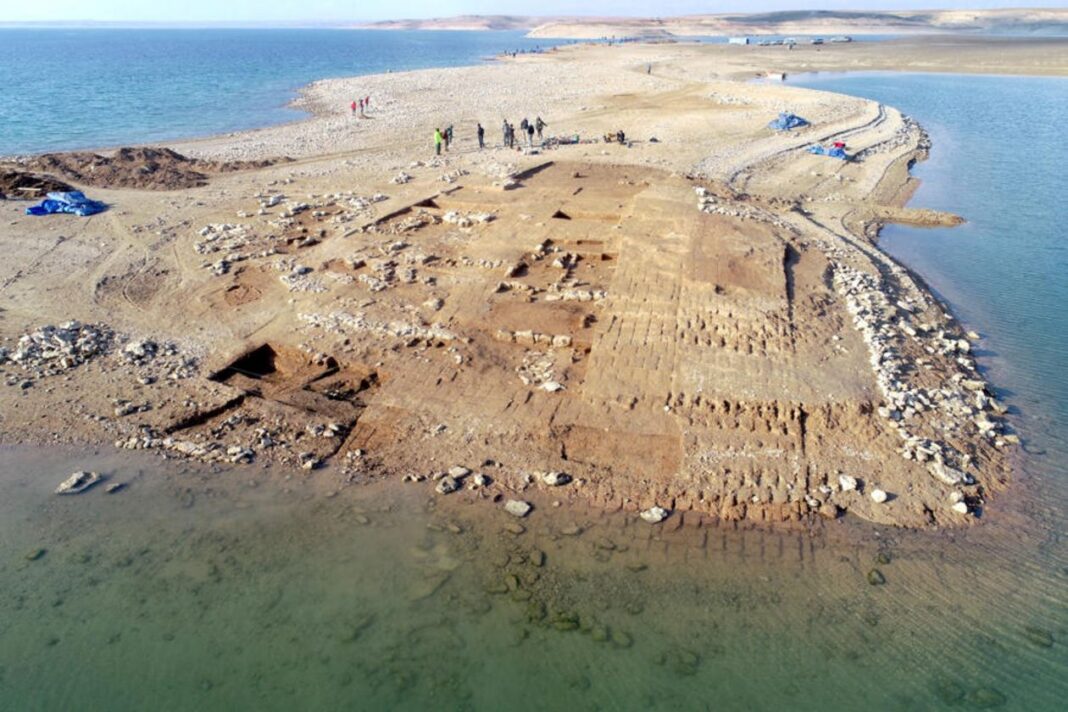In the Mosul Reservoir, which has become shallow due to drought, an ancient city of 3.4 thousand years old has surfaced for the second time in the last three years. After some time, he again went under water, but archaeologists studied the territory, found artifacts and protected the fortress walls from the advancing water.
The Mosul reservoir is located on the Tigris River in northern Iraq. Scientists suggest that under it are the ruins of the ancient city of Zahiku, one of the centers of the Mitanni state. It is mentioned in the annals, but without specifying a specific location. Presumably, Zahiku was destroyed by an earthquake around 1350 BC.
First of all, archaeologists made a map of the city. A palace had already been applied to it – it was discovered during the last ascent.
Now several more large buildings have appeared on the map: a fortress wall with towers, an industrial complex and a multi-storey warehouse. Dozens of different goods from Egypt and neighboring regions were found in it.
It is possible that trade routes crossed in Zahika at the crossing of the Tigris. Control over it could lead the city to prosperity – merchants, warriors, and travelers had to cross the full-flowing river.
The mud-brick walls of the buildings are well preserved, given that they were flooded about 40 years ago.
Of the interesting artifacts, five ceramic vessels with hundreds of cuneiform tablets were found in Zahiku. They were dated to the XIV-XI centuries BC. Experts are already busy deciphering.
When the water began to rise, the archaeologists covered the surveyed buildings with plastic sheeting. It fits snugly against the ruins of the walls and should keep the unbaked clay from moisture. Today, Zahiku is completely flooded again.









